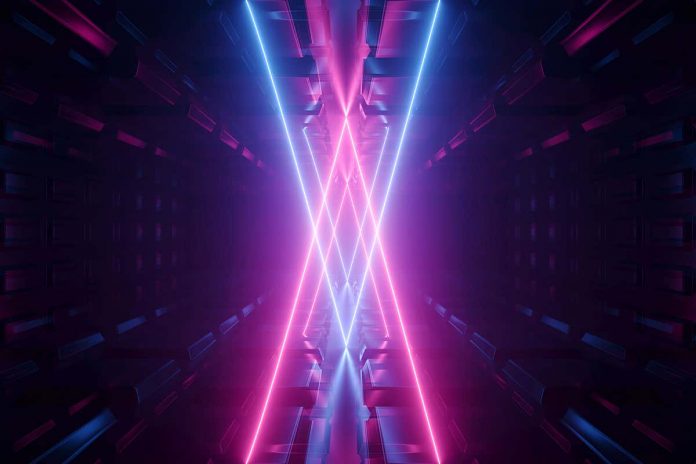[ad_1]

IM_VISUALS/Shutterstock
A new type of quantum computing called boson sampling is capable of calculations that no classical computer could accomplish in any reasonable amount of time. This is the second time this feat, known as quantum supremacy, has been claimed for a quantum algorithm after Google said in 2019 that its Sycamore device had achieved this.
Boson sampling relies on a strange quantum property of photons – particles of light – that is displayed when they travel through a beam splitter, which divides a single beam of light into two beams propagating in different directions. If two identical photons hit the beam splitter at exactly the same time, they don’t split from one another. Instead, they stick together and both travel in the same direction.
If you shoot many photons through a sequence of beam splitters many times in a row, patterns begin to emerge in the paths of the photons that are extraordinarily difficult to simulate or predict with classical computers. Finding possible sets of photon paths in this set-up is called boson sampling, and a boson sampling device is a type of quantum computer, albeit one with a very narrow purpose.
Advertisement
A team led by Jian-Wei Pan at the University of Science and Technology of China built a boson sampling device called Jiuzhang using laser pulses sent into a maze of 300 beam splitters and 75 mirrors. A perfect boson sampler would have a fidelity of 1 over many trials, meaning that it completely matches up with theoretical predictions. Jiuzhang had a fidelity of 0.99.
The researchers calculated that it would be impossible to simulate boson sampling with such a high fidelity on a classical computer: the Japanese Fugaku supercomputer, the world’s most powerful classical computer, would take 600 million years to accomplish what Jiuzhang can do in just 200 seconds. The fourth most powerful supercomputer, the Sunway TaihuLight, would take 2.5 billion years.
“It shows that it’s feasible to get to quantum supremacy using photonic boson sampling, which many people had doubted, and which represents a completely different hardware path than the superconducting qubits that Google used,” says Scott Aaronson at the University of Texas at Austin.
While this is an impressive achievement, quantum supremacy only means that this device is better than classical computers at one extremely specific task. “It doesn’t mean building a scalable quantum computer, or a universal quantum computer, or a useful quantum computer,” says Aaronson.
Changing the boson sampling mechanism to allow researchers to pause the experiment, make measurements and redirect some of the photons could allow it to do different types of computations, but that next step will be extraordinarily difficult to achieve. Until then, there might be little practical use for boson sampling.
“It’s not obvious whether boson sampling has any applications in and of itself besides demonstrating quantum supremacy,” says Aaronson. However, he says, it might be useful in quantum chemistry or for generating random numbers for encryption.
Journal reference: Science, DOI: 10.1126/science.abe8770
More on these topics:
[ad_2]
Source link











